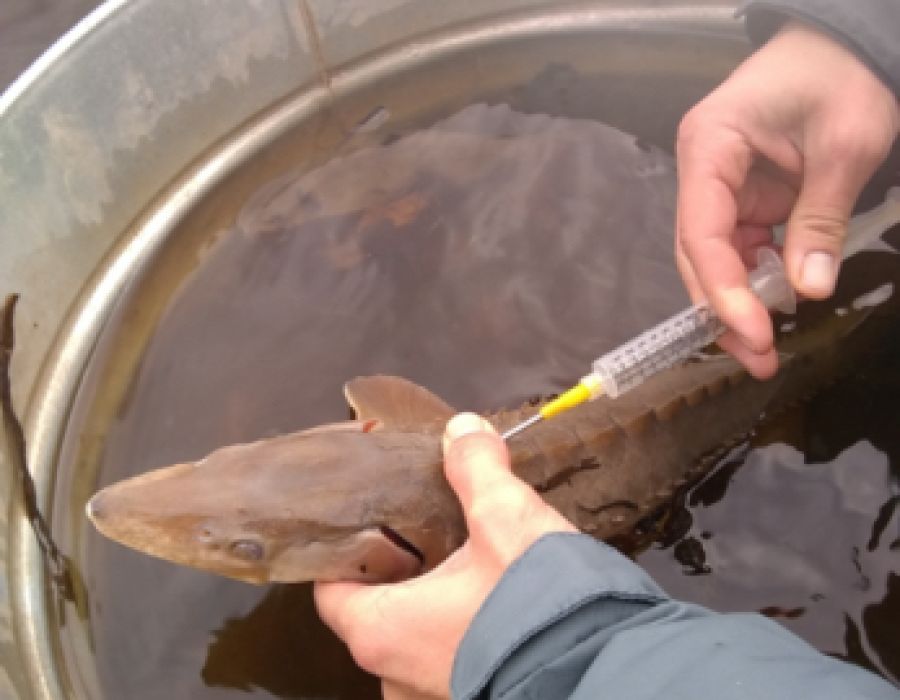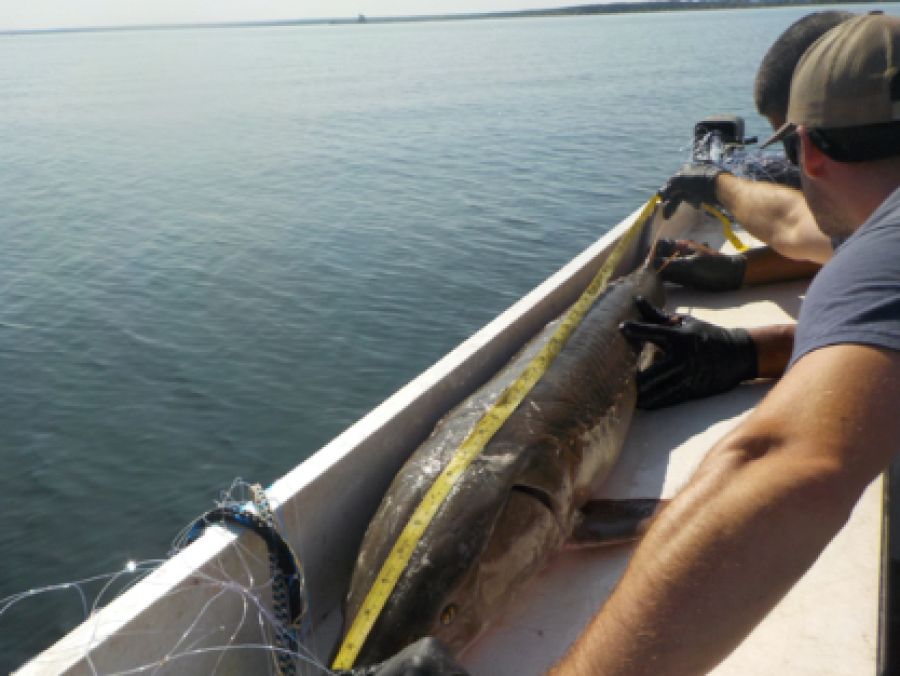Lake Sturgeon Monitoring Projects
The St. Louis River, once a historical location of a large, self-sustaining Name 'Ogimaa giigonh (lake sturgeon) population, is in the initial stages of re-developing a naturally reproducing population. Lake Sturgeon are a long-lived species capable of reaching very large sizes, yet this same life history makes them vulnerable. Sexual maturity is not reached until 15-30 years of age and spawning by individual fish often only occurs every two to nine years. Lake Sturgeon were likely eliminated from the river by the early 1900's due to the combined effects of exploitation, water pollution, habitat alteration, and logging practices. Following water quality improvements in the late 1970's and early 1980's, the Wisconsin and Minnesota Natural Resources Departments began the long process of a large-scale sturgeon reintroduction program in 1983. Stocking of both fry and fingerling sturgeon occurred from 1983-1993 and again from 1998-2001. Survival of the stocked sturgeon has been fairly high, and sturgeon have been spawning in the St. Louis River once again.

Larval Drift Netting
In 2011, the first documented naturally reproduced larval Lake Sturgeon were captured during a drift netting survey below the Fond du Lac dam on the St. Louis River. From 2011-2018, 58 larval sturgeon have been captured in these drift net surveys. In the 2019 drift net survey, over 1,000 larvae were sampled. As promising as this may seem, a variety of factors could have led to this influx of captured individuals (timing, good year class, placement of nets, etc). Future surveys will confirm if this is a sign of improved reproductive success to come, or if this year was an anomaly. Although this confirms successful natural reproduction within the estuary, there has been a limited number of recently documented juvenile sturgeon in the river. This could be due to a variety of factors (contaminants, lack of females of spawning age, genetics, high egg/larvae predation, sample gear types-typically are more selective towards adults, etc). Hopefully, more research can shed light on the cause/s of this issue.
Sturgeon Index Survey
Since 2016, the 1854 Treaty Authority has conducted annual Lake Sturgeon index surveys on Lake Superior. In 2019, eleven sturgeon were captured. The goals of these surveys are to:
- assess the current lake-wide status of juvenile and sub-adult Lake Sturgeon in Lake Superior (ages ~4-15 years);
- establish an index of relative abundance to monitor recruitment, year class strength, and population trends over time;
- describe and compare the biological characteristics of Lake Sturgeon within and among locations throughout Lake Superior and over time.

Sturgeon Setline: New in 2019
In 2019, the 1854 Treaty Authority conducted a setline survey. A setline is very similar to a trotline, in which multiple lines with baited hooks are tied off to a main line. In nine overnight sets in 2019, nine sturgeon were captured. The goals of the survey are to:
- document survival of natural reproduced sturgeon following restoration efforts by the Minnesota and Wisconsin Departments of Natural Resources;
- capture a known female sturgeon that an acoustic tag could be administered to gather season location data. This survey will continue in the 2020 field season.
-47c9ae80.jpeg)
-d5b7c907.jpeg)
-dc59e8cb.jpeg)
-e8f01c1f.jpeg)